News
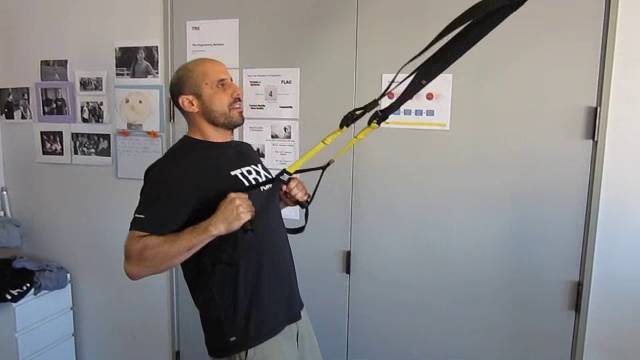
TRX Training: Masses and Spaces
Chances are you’ve heard the term “masses and spaces." Like many phrases we use to cue exercises (“proud chest,” “distal mobility,” “scapular Js”), it’s an evocative term that has a rich origin, but might not make too much sense unless given the respective context.
In the video above, TRX Head of Human Performance Chris Frankel talks about where this term comes from and demonstrates the principle in action.
The idea is to view the body as a series of masses (the head, chest and hips) held together by a series of spaces (the neck and waist). The meaning of maintaining “masses and spaces” simply means to make sure that none of your masses overtake your spaces while you move and train. It’s a term that can apply to any kind of training but proves particularly applicable to TRX Suspension Training bodyweight exercises.
Simple, yes. Easy, no.
Visualize someone executing a perfect plank. Shoulders locked down and back, and in line with hips, knees and ankles. If the shoulders shrug or the hips sag, they lose the spaces between their masses. It's a great body check for something like maintaining proximal stability before distal mobility because if you have maintained your masses and spaces, chances are you're bracing all of the core and back muscles surrounding your spine, locking in a solid plank before you incorporate some sort of movement.
Practice maintainig masses and spaces when you pick up your TRX Suspension Trainer.
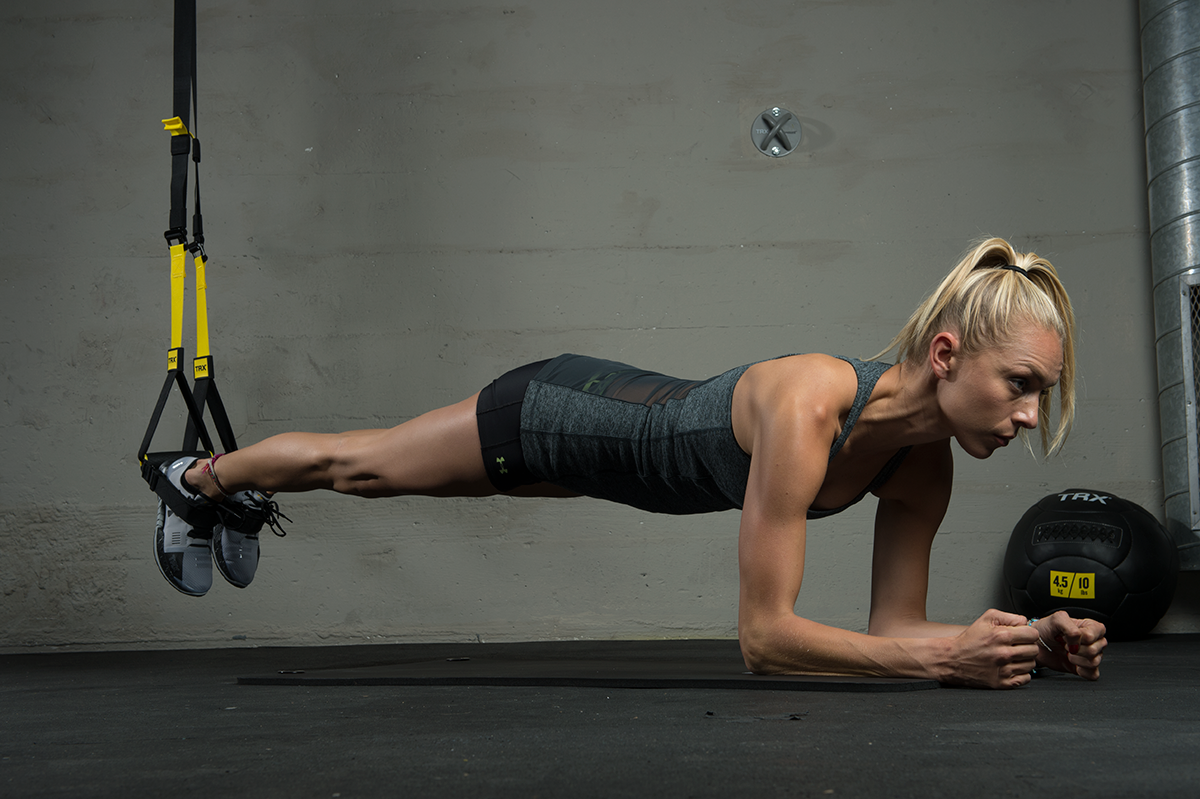
TRX Total Strength and Conditioning Workout Program
TRX Training
The TRX Total Strength and Conditioning Workout Program is a six-week progressive training regimen (in PDF format) that will build your cardio endurance, strength, core stability and flexibility. Not sure where to start with your training? Take our quick assessment quiz to get a customized program that matches your current fitness level and goals.
TAKE OUR TRAINING QUIZ
Results are a combination of diligence and hard work, combined with appropriate rest, recovery and nutrition applied to a well-designed training program. For many of us, the hardest part of fitness is not the will to execute, but the right strategy. We may have the drive to succeed but lack the direction. Here is your road map to results, complements of TRX.
Stick to this plan and in six weeks, if you put the work in, you’ll see a positive change in the way you move, feel and look.
If you don't have a suspension trainer, pick one up today.
TRX® PRO4 SYSTEM
BUY NOW
TRX® HOME2 SYSTEM
BUY NOW
TRX® TACTICAL GYM
BUY NOW
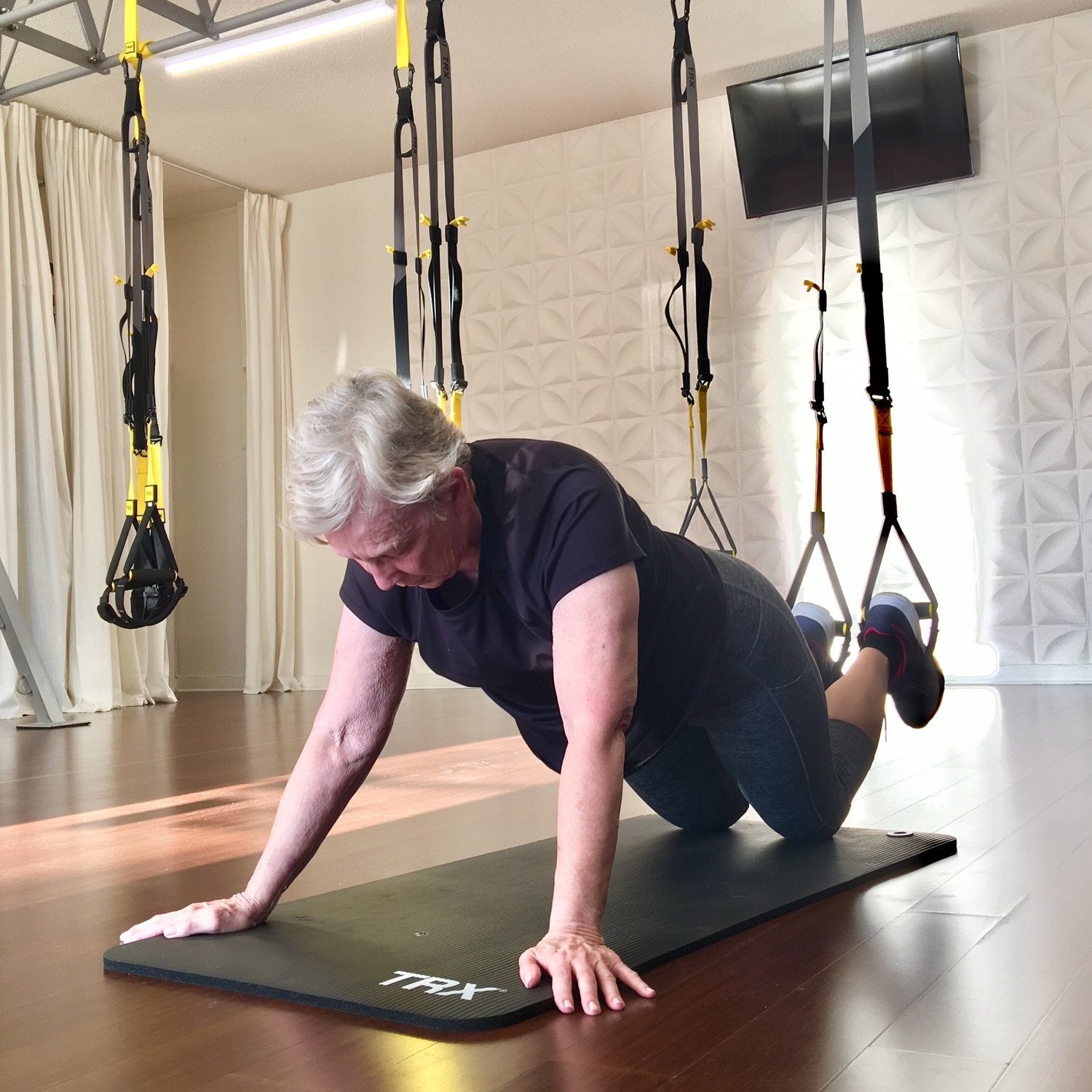
TRX
TRX Training for Seniors
Older adults represent the fastest emerging market in both fitness and rehabilitation. According to the National Institute on Aging, the older population will double between 2011 and 2030 when older adults will represent 25% of American society. The majority of these people will be dealing with at least one chronic health condition, which can be managed or reversed with physical activity. Exercise training is a highly effective way to decrease or manage the risk of chronic disease or disability, including fall prevention.
TRX Suspension Training can be a powerful tool to use with even the most limited older clients. A recent research study conducted by Dr. Christian Thompson at the University of San Francisco determined that the TRX Suspension Training system is a safe, effective and enjoyable exercise modality to utilize in older adults who were deemed to be at risk for an accidental fall. This research, which has been peer-reviewed by the American College of Sports Medicine, was an eight-week training program using TRX Suspension Training to enhance functional fitness in a group of older adults who had never used the TRX Suspension Trainer before. The TRX was used for mobility exercises for the ankle, hip, thoracic spine and shoulder; muscle strengthening exercises for the lower and upper body; and dynamic balance/gait enhancement exercises. Exercise volume and complexity progressed at regular intervals throughout the training period. Functional fitness outcomes were measured pre and post test by Functional Reach Test, Timed Up-and-Go Test, and 30 Second Chair Stand Test.
Some of the exercises used in the study include – and if you're wondering which of these might be most effective for your personal fitness journey, take our quick assessment quiz for customized recommendations. Here are the exercises:
TAKE OUR TRAINING QUIZ
TRX Overhead Squat
TRX Mid Row
TRX Chest Press
Examples of these exercises can be seen in this video, done for a previous blog post on osteoporosis.
Regardless of your age or ability level, the TRX is an adaptable and effective exercise device. Have you used the TRX to train older adult clients? If so, share your results below.
If you don't have a suspension trainer, pick one up today.
TRX® PRO4 SYSTEM
BUY NOW
TRX® HOME2 SYSTEM
BUY NOW
TRX® TACTICAL GYM
BUY NOW
All clients should consult with a physician or physical therapist regarding specific limitations and restrictions prior to beginning this or any exercise program.
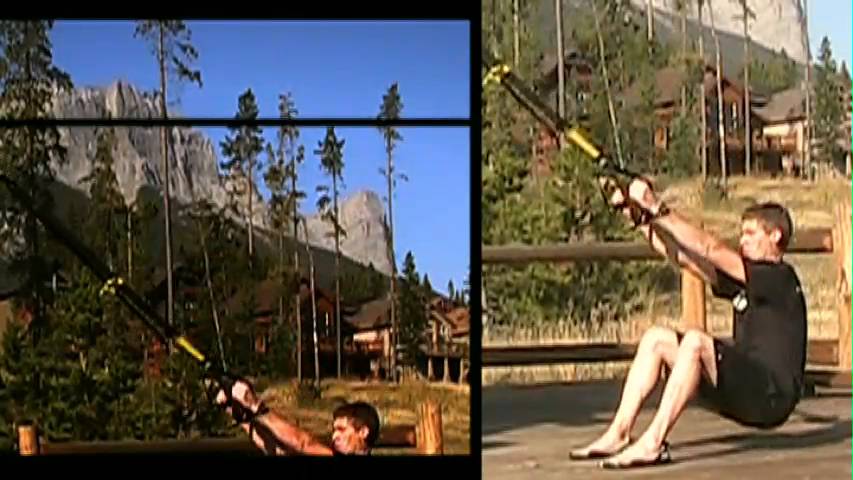
TRX Total Body Challenge Workout
Try this TRX total body warm up the next time you workout. As Fraser Quelch says, "This exercise doesn't necessarily have to be used as a warm up. For many people, this is plenty challenging enough, integrated right into the workout." Whether you use it as a warm up or part of your routine, this combo can inspire endless possibilities.
Fraser Quelch is Director of Training and Development for TRX. An expert in functional training and endurance athletics, Fraser has presented at events worldwide and is featured in numerous fitness DVDs. Fraser holds a Bachelor's degree in Physical Education and in 2011 was named co-recipient of IDEA's Program Director of the Year award.

TRX Torso Rotation
A great athletic movement that involves the entire core musculature. Want to find the perfect core exercises for your fitness level? Take our quick assessment quiz to get a personalized training plan that targets your obliques and full core. But targets the internal and external obliques.
TAKE OUR TRAINING QUIZ
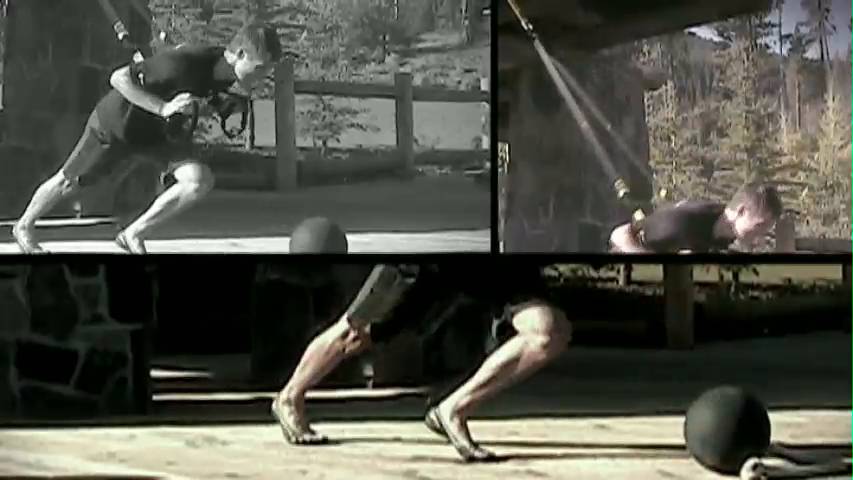
TRX Tornado Ball Fusion Workout
Looking for a heart-pumping workout? Head of Training Fraser Quelch combines six TRX exercises with tornado ball work for an intense metabolic circuit. Take our quick fitness assessment quiz to get a customized version of this workout matched to your level. The sequence includes: TRX Low Row, TRX Chest Press, Tornado Ball Wall Chops (med ball works too), TRX Lunge, TRX Sprinter Start, Tornado Ball Slams, TRX Atomic Push-up Matrix (combining standard Atomic Push-up with Oblique Crunch), TRX Hip Press and Tornado Ball Seated Chops. Fast and furious... just like a tornado!
TAKE OUR TRAINING QUIZ
Again, if you do not own a tornado ball, you can still do this workout using a medicine ball and performing slams during the time allocated for the tornado ball work. Either way, the ball exercises in this circuit or traditional med ball slams are great for developing rotational power, anaerobic conditioning and core function. If you have a tornado ball and want to give the exercises in this video a try, read on.
Tornado Ball Wall ChopIn addition to being an incredible exercise for anyone wanting to improve rotational power, this exercise will assist any implement-swinging athlete such as golfers, baseball players and hockey players. Begin by standing a couple feet from a sturdy wall. Bend your knees, draw your belly button in and make sure you have a good grip on the rope. Once you’re in position, start swinging. As you pick up speed and slam the ball into the wall harder and harder, you’ll likely have to bend your knees even further to lower your center of gravity. If you don’t, the centripetal force of the ball will be enough to pull you forward away from the wall.
Tornado Ball ChopThis is a great rotational exercise that will help you to develop rock-hard abs. Stand with your feet parallel and knees slightly bent. Bend at the waist and use your core muscles to swing and slam the ball down on the ground about a foot in front of you to one side. Continue this chopping motion on either side, engaging your core for balance.
Tornado Ball Seated ChopThis exercise is great for any wrestlers, football players and rugby players who need to improve their ability to throw an opponent while on the ground or who need to get off the ground quickly. Begin by sitting on the ground, draw your belly button in and begin chopping back and forth to each side of you. As with the other exercises, the faster you chop, the more intense the exercise becomes.
The TRX Tornado Ball Sequence is a great total body circuit that will develop strength, endurance (both aerobic and anaerobic), flexibility and coordination, so give it a whirl and let us know what you think!
Fraser Quelch is Director of Training and Development for TRX. An expert in functional training and endurance athletics, Fraser has presented at events worldwide and is featured in numerous fitness DVDs. Fraser holds a Bachelor's degree in Physical Education and in 2011 was named co-recipient of IDEA's Program Director of the Year award.
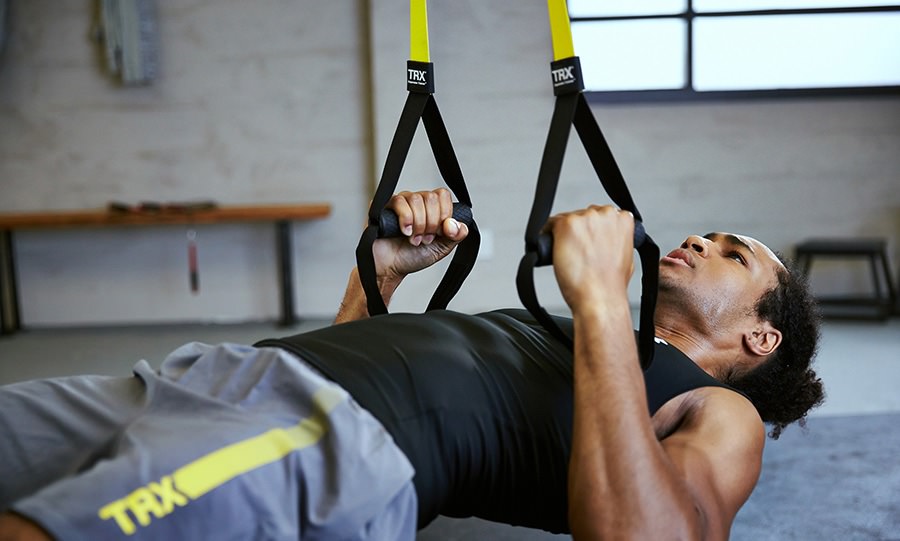
TRX Tips for Effective Core Training
In an effort to clear up a bit of the ambiguity surrounding core training, TRX Director of Programing and Education, Fraser Quelch, gives us this deep dive into what surrounds your midsection. Before diving in, take our quick core assessment quiz for personalized exercise recommendations. Learn about some must-have core training tools and six exercises that will set your midsection on fire.
TAKE OUR TRAINING QUIZ
Fraser's Definition of the Core:
The core includes the following muscles: Transverse Abdominis, Rectus Abdominis, Multifidus, External Obliques, Internal Obliques, Quadratus Lumborum and Erector Spinae. It provides a stable platform which launches all of our movement by stabilizing the spine. The core generates the rotational forces needed for many athletic movements including throwing, swinging, striking and twisting, and it acts to resist or neutralize external forces such as gravity, contact or momentum. We are only as strong as our core. A weak core limits our strength capacity.
Fraser's Four Tools to Add to Your Core Training Routine:
TRX Suspension TrainerOne of the most innovative additions to core training in recent years, this non-elastic, adjustable harness constructed of industrial-strength nylon webbing uses bodyweight as the sole source of variable resistance. The TRX allows for hundreds of exercises that can accommodate all fitness levels. It integrates the core's postural, stabilizer and neutralizer components in all of its exercises, and the addition of the suspended planks, crunches and oblique capabilities make it one of the most effective tools on the market.
Stability BallThe stability ball creates an unstable environment that requires more work from the core. Simple yet demanding, the stability ball can add a challenge to many exercises and modify others.
Heavy BallMade to bounce due to textured rubber, heavy balls help train the core to control external forces, to stabilize the body while applying internal forces and when working at higher speeds.
Balance DevicesBalance devices come in all shapes and sizes: wobble boards, balance discs, Bosu balls, Bongo boards and foam balance surfaces. They all destabilize the surface using a base of support in one way or another, making the core more responsive. A word of caution: always evaluate possible danger versus potential benefit before attempting any exercise that destabilizes your base of support.
Fraser's Fun and Challenging Exercises
The following six movements utilize some of the tools outlined above and offer a complete core training package. He includes beginner, intermediate and advanced versions to address a broad range of abilities.
1. Prone Rollout (Stability Ball or TRX)
In a kneeling position, place hands on stability ball or TRX handles with elbows bent and hands positioned below chest. Assume tall posture and actively engage the core.
Tilt body forward, slowly transferring weight into hands.
Slowly extend arms, opening body as far as possible. Ensure that the body stays in a straight line and make sure the hips do not sag towards the ground.
Stop when you feel the core is challenged but not overwhelmed, and then reverse action, returning to the start position. Perform at a slow and controlled movement speed and keep the range of motion small (not greater than one foot of movement).Beginner: Small range of motionIntermediate: Deeper extension and longer holds in extended positionAdvanced: On the TRX, move to a roll out in a standing position
2. Body Saw with Crunch (TRX or Stability Ball)
Suspend the toes in the TRX or on top of a stability ball and position body in a prone plank on elbows.
Engage core and open up at the shoulder joint, slowly pushing the body back in a sawing motion. Do not allow hips to sag toward the ground.
Pull body forward, lifting hips and pulling knees to chest in a suspended crunch action and then return to the plank position.Beginner: Body SawIntermediate: Body Saw with Crunch (as described above)Advanced: Perform Body Saw with a Pike movement or attempt the Body Saw from hands
3. Heavy Ball Rotational Throw (Partner or Wall)
Stand facing a partner/wall in a lunge stance with the leg nearest to the partner/wall forward. Maintain a tall posture.
Receive the ball with outstretched arms, absorbing and controlling the force by activating the core musculature and rotating away from the direction of the ball.
Rotate back toward the partner/wall and release the ball with both hands. To progress, come to a narrow stance, increase the movement speed or increase the weight of the heavy ball.Beginner: Soft throw with a light ballIntermediate: Hard throw with a light ball or soft throw with a heavy ballAdvanced: Hard throw with a heavy ball
4. High to Low Tubing Wood Chop (Rubber Tubing with handles)
Wrap your tubing around a pole and loop one handle over the other for single-handle mode. Stand facing the tubing with feet together and arms outstretched at shoulder level. Grasp the tubing handle with a two-handed grip and keep the hips square.
Allow the head to move with the hands, and twist toward the pull of the tubing with the shoulders and torso. Engage the muscles around the core and stabilize the hips, twisting down and away from the pull of the tubing. The movement finishes with the hands at waist level.Beginner: Wide stance with light resistanceIntermediate: Narrow stance with light resistance or wide stance with heavy resistanceAdvanced: Narrow stance with heavy resistance
5. Standing Hip Drop (TRX)
Stand facing the TRX, assuming a staggered stance with the inside leg positioned forward. Place the TRX in single-handle mode grabbing with both hands and positioning on the crown of the head.
Allow the hip to drop away from the body toward the floor, avoiding rotation of the torso.Beginner: Shallow position using a slow movement speedIntermediate: Position body at a steeper angleAdvanced: Keep the body at a steep angle and increase movement speed
6. Side Plank with Floor Taps (Elbow, Hand, Feet-Floor/TRX)
Turn on your side with one foot stacked on top of the other. Support upper body with one forearm, keeping hips square and core engaged while lifting off the floor.
Keep elbow of supporting arm in line with shoulder. Focus on maintaining strong body alignment.
For advanced progression, add a piking action coupled with a rotational reach under the body, followed by a return to the side plank position with the arm outstretched toward the ceiling.Beginner: Support on elbow with feet offset (outside leg in front of back leg)Intermediate: Support on hand with feet offset or support on elbow with feet in TRXAdvanced: Support on hand with feet stacked on top of one another or support on hand with feet in TRX.
Get one of Fraser's core training tools when you purchase your TRX Suspension Trainer.
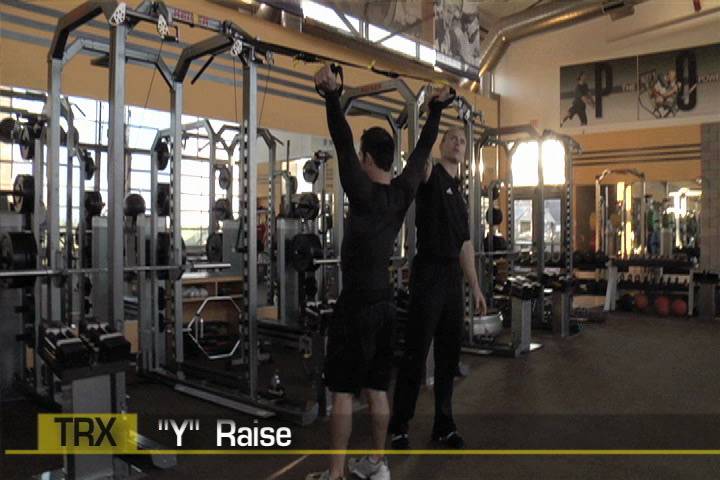
TRX Tips for Baseball
As pro baseball players slide into spring training, they seek every possible advantage to maximize functional strength gains for the grueling 162-game season ahead. The performance enhancer that all 30 MLB teams use universally? TRX. Currently, 100% of MLB teams incorporate TRX into their training to help increase mobility, core strength, total-body strength and the durability they need to go extra innings, all season long.
In this video, Athletes Performance and EXOS founder Mark Verstegen demonstrates a five-exercise TRX workout for building functional strength for baseball players.
Perform 1-3 sets of each exercise, 6-12 reps in each.
1. TRX T Deltoid Fly2. TRX W Deltoid Fly3. TRX Y Deltoid Fly4. TRX Acceleration Load and Lift5. TRX Single Arm Row
Want to step up your Spring Training even more? The TRX Performance: Team Sports workout is a home run.

TRX Tactical Training Box
The TRX Tactical Training Box is a fully-deployable, heavy-duty steel chest designed to anchor a functional-training rig and create a multi-modality training center to accommodate 1-5 users in just 10 minutes. Take our equipment quiz for personalized setup recommendations and training configurations for your space.
TAKE OUR TRAINING QUIZ
Highly-portable, this Box provides all the essential gear to facilitate our proprietary Lift / Move / Recover tactical training program, making it the perfect solution for conducting PT in any environment.
The TRX Tactical Training Box (Light) is available now for $2,999 including shipping and handling--less than the Government Purchase Card threshold. Forward this link to your procurement officer to purchase one today.
For more information on The Tactical Training Box or how to purchase please click here
For more information on all TRX Tactical Training, click here.
